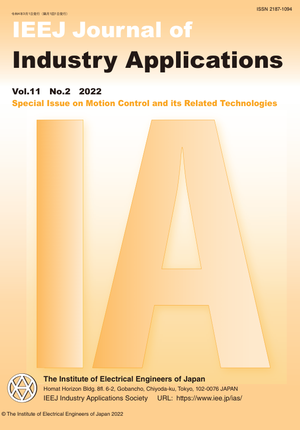Work in the Time of Covid-19: Actuators and Sensors for Rehabilitation Robotics
Work in the Time of Covid-19: Actuators and Sensors for Rehabilitation Robotics
カテゴリ: 論文誌(論文単位)
グループ名: 【D】産業応用部門(英文)
発行日: 2022/03/01
タイトル(英語): Work in the Time of Covid-19: Actuators and Sensors for Rehabilitation Robotics
著者名: Ronnapee Chaichaowarat (International School of Engineering, Chulalongkorn University), Satoshi Nishimura (Department of Mechanical Engineering, MIT), Takahiro Nozaki (Department of System Design Engineering, Keio University), Hermano Igo Krebs (Departmen
著者名(英語): Ronnapee Chaichaowarat (International School of Engineering, Chulalongkorn University), Satoshi Nishimura (Department of Mechanical Engineering, MIT), Takahiro Nozaki (Department of System Design Engineering, Keio University), Hermano Igo Krebs (Department of Mechanical Engineering, MIT)
キーワード: rehabilitation robotics,body-weight support system,variable stiffness actuator,planar motor,tactile sensor
要約(英語): This paper reports on our work conducted during 2020 in the development of actuation and sensing techniques and devices. In gait rehabilitation, active body weight support systems are often needed to guarantee the safety of patients. These support systems are required to operate at two distinct operation points: a high-force operating mode to hold a patient and prevent falls and, conversely, a “transparent mode” that reduces the mechanical impedance of high-force actuators to enable patients, even those who are weak or paralyzed, to easily express movement. However, the ability to deliver high forces and easily manipulate robots is a key challenge in improving the force-based interaction control. Force feedback is an effective approach to reduce the inertia and friction of robots, but stability is paramount particularly when interacting with humans. By modeling the environment as a second-order spring-mass-damper system and considering the phase response, we derived the control parameter gains required to guarantee a stable human-robot interaction. The design of actuators with intrinsically adjustable mechanical properties is a complementary strategy. For instance, the stiffness of actuators can be modulated by adjusting the unsupported length of a cantilever leaf spring. To model the spring stiffness under deflection, an ideal cantilever support model cannot be assumed for a conventional design of a slider with dual roller pairs, particularly with a soft spring. We proposed a beam deflection model considering the non-zero slopes at the contact points between the rollers and spring. The spring parameters were determined to attain the desired range of stiffness with a short traveling distance of the adjuster. For a single degree-of-freedom (DOF) linear motion, we investigated a macro-mini actuation concept using an electrorheological-fluid brake. Balancing these conflicting requirements between the driving force generated from the non-backdrivable high-force unit and the low-inertia and low-friction unit was achieved by controlling the electrical field affecting the fluid yield stress between the rotor and stator electrodes of the brake. One of the limitations of the feedback control scheme was noisy force sensors. We discuss our novel proximity and force sensor using optical techniques and conclude with a description of low-profile 3-DOF flat motor.
本誌掲載ページ: 256-265 p
原稿種別: 論文/英語
電子版へのリンク: https://www.jstage.jst.go.jp/article/ieejjia/11/2/11_21006581/_article/-char/ja/
受取状況を読み込めませんでした


